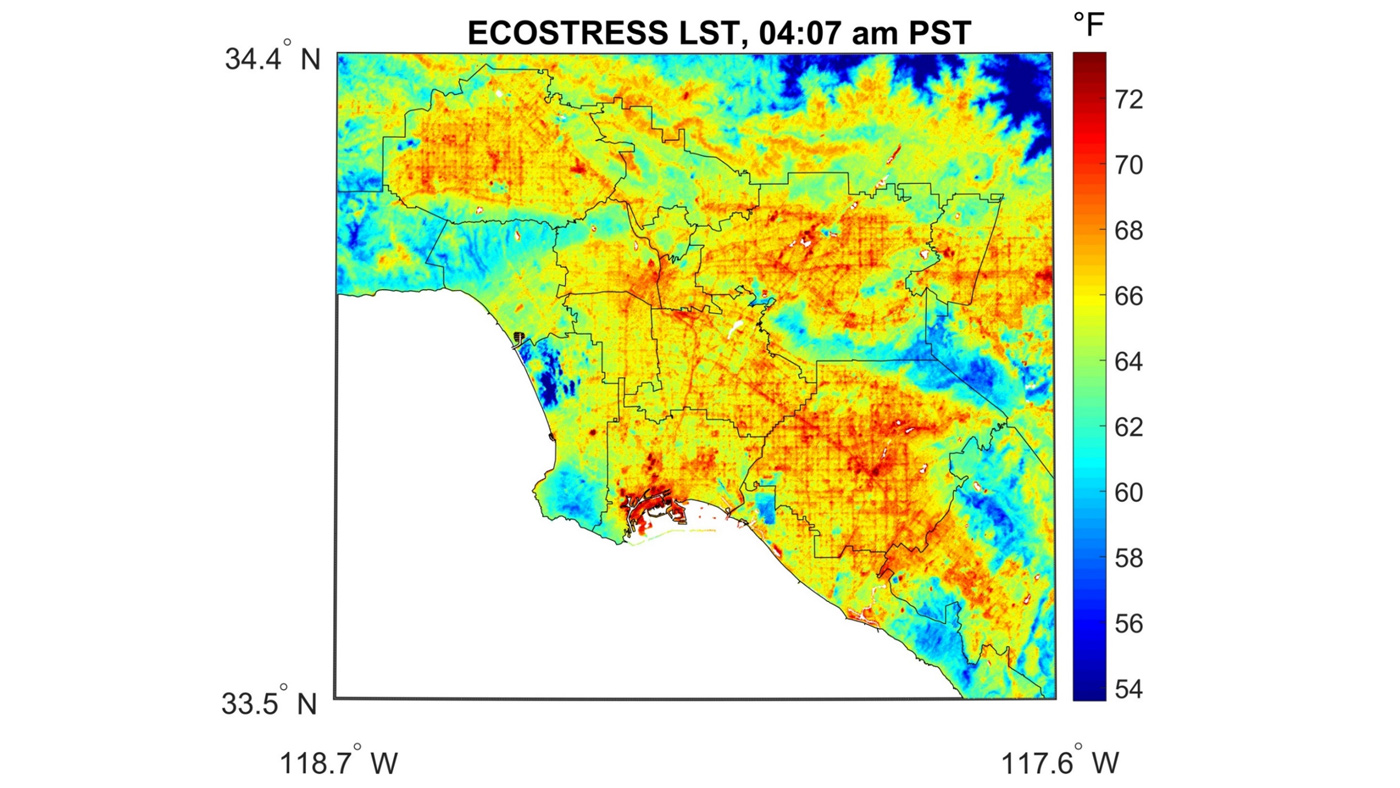Projects
ECOSTRESS

Background
NASA's ECOSTRESS mission seeks to better understand how much water plants need and how they respond to stress. Two processes show how plants use water: evaporation and transpiration. Evaporation of water from the soil surrounding plants affects how much water the plants can use. Transpiration is the process of plants losing water through tiny pores in their leaves. ECOSTRESS measures the temperature of plants and land to understand combined evaporation and transpiration, known as evapotranspiration. See the temperature map of the Los Angeles Basin below constructed from ECOSTRESS data as an example of data for such study.

Problem
The ECOSTRESS mission acquires over a thousand scenes per week. The science team would like to acquire scenes according to several tiers of priority relating to the importance of mapping specific point targets or areas. Additionally, targets may have a periodic aspect to them, such as a goal to complete a global map every 4 or 8 weeks. Typically, a campaign will also have an illumination constraint - such as image only when the sun is 45 degrees above the horizon at the target point, or daylight (e.g. sun above the horizon by even the smallest number of degrees). The ECOSTRESS mission also has data volume constraints - relating to the onboard storage and downlink transmission rates. The scheduler must respect data volume constraints or too much data will be acquired and be overwritten before it can be downlinked due to limited onboard storage. Finally, ECOSTRESS operations is affected by on orbit radiation, therefore geographic keepout zones - where the hardware must be in selected states to mitigate radiation effects also must be enforced - impacting operations (both imaging and data handling).Impact
The ECOSTRESS scheduler has been key in enabling successful ECOSTRESS science operations despite issues relating to the ECOSTRESS ring buffer and Mass Storage Unit performance.The ECOSTRESS scheduler was used pre-launch to simulate the effectiveness of alternative formulations of science campaign definitions to derive the initial operational science campaign definitions and priorities. The scheduler was then used after instrument checkout for operations. The scheduler has been updated several times to address operational challenges relating to ring buffer performance and Mass Storage Unit performance. The scheduler has also been updated to improve handling of along track uncertainty inherent in International Space Station operations.
Status
ECOSTRESS launched on June 29, 2018 to the ISS (International Space Station) on a Space-X Falcon 9 rocket as part of a resupply mission. The instrument is attached to the Japanese Experiment Module-Exposed Facility (JEM-EF) on the ISS and targets key biomes on the Earth's surface, as well as calibration/validation sites. Other science targets include cities and volcanoes. From the orbit of the International Space Station, the ECOSTRESS instrument can see target regions at varying times throughout the day, rather than more common sun synchronous satellites which see the same target always at a fixed time of day. This variability in overflight timing allows scientists to study how plant water use varies throughout the day.After instrument checkout, the ECOSTRESS scheduler has been used near continuously for operations of the ECOSTRESS mission.
Publications
Team
Amruta YelamanchiliSteve Chien
Alan Moy
Elly Shao
Michael Trowbridge
Kerry Cawse-Nicholson
Jordan Padams
Dana Freeborn
